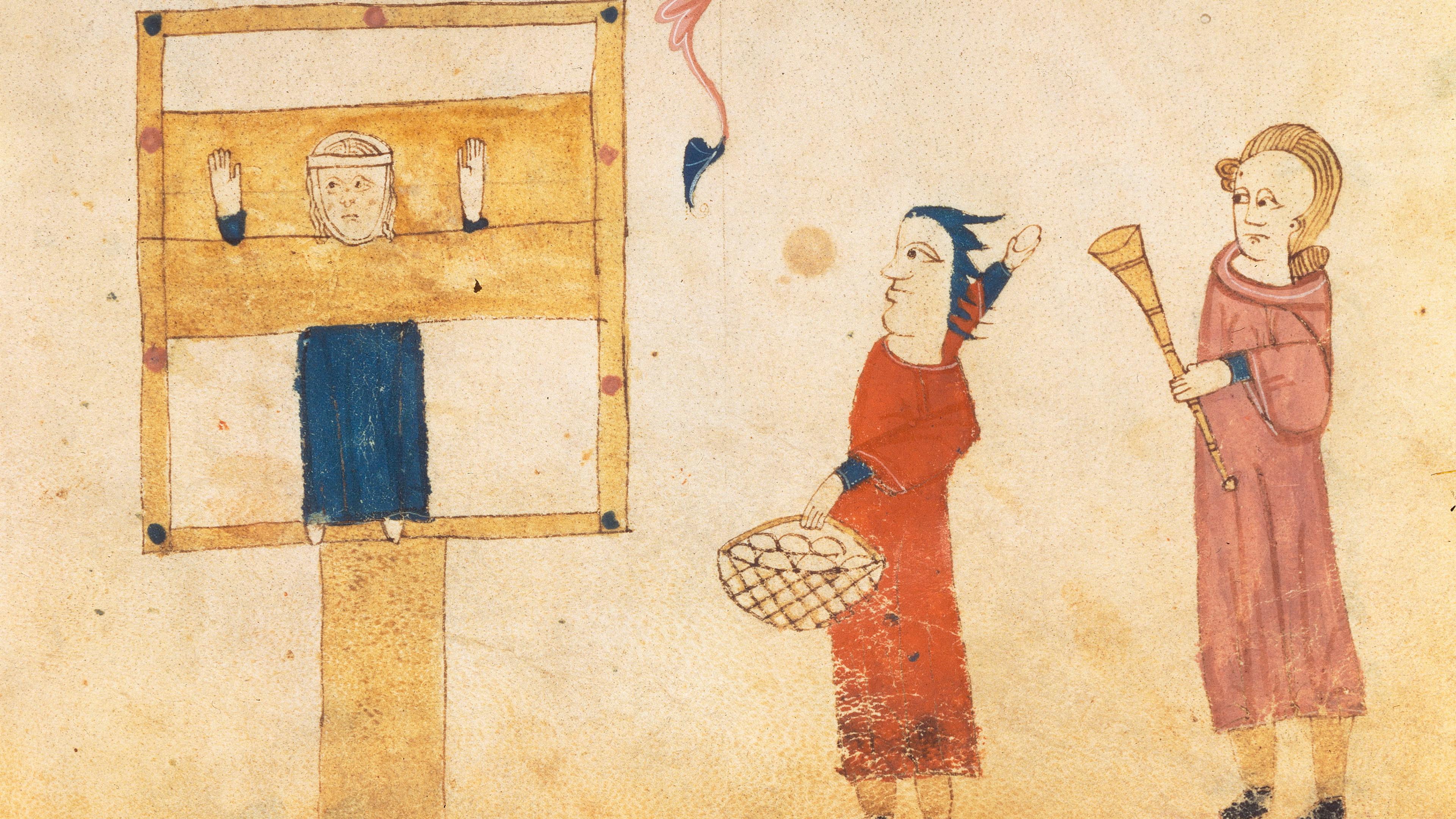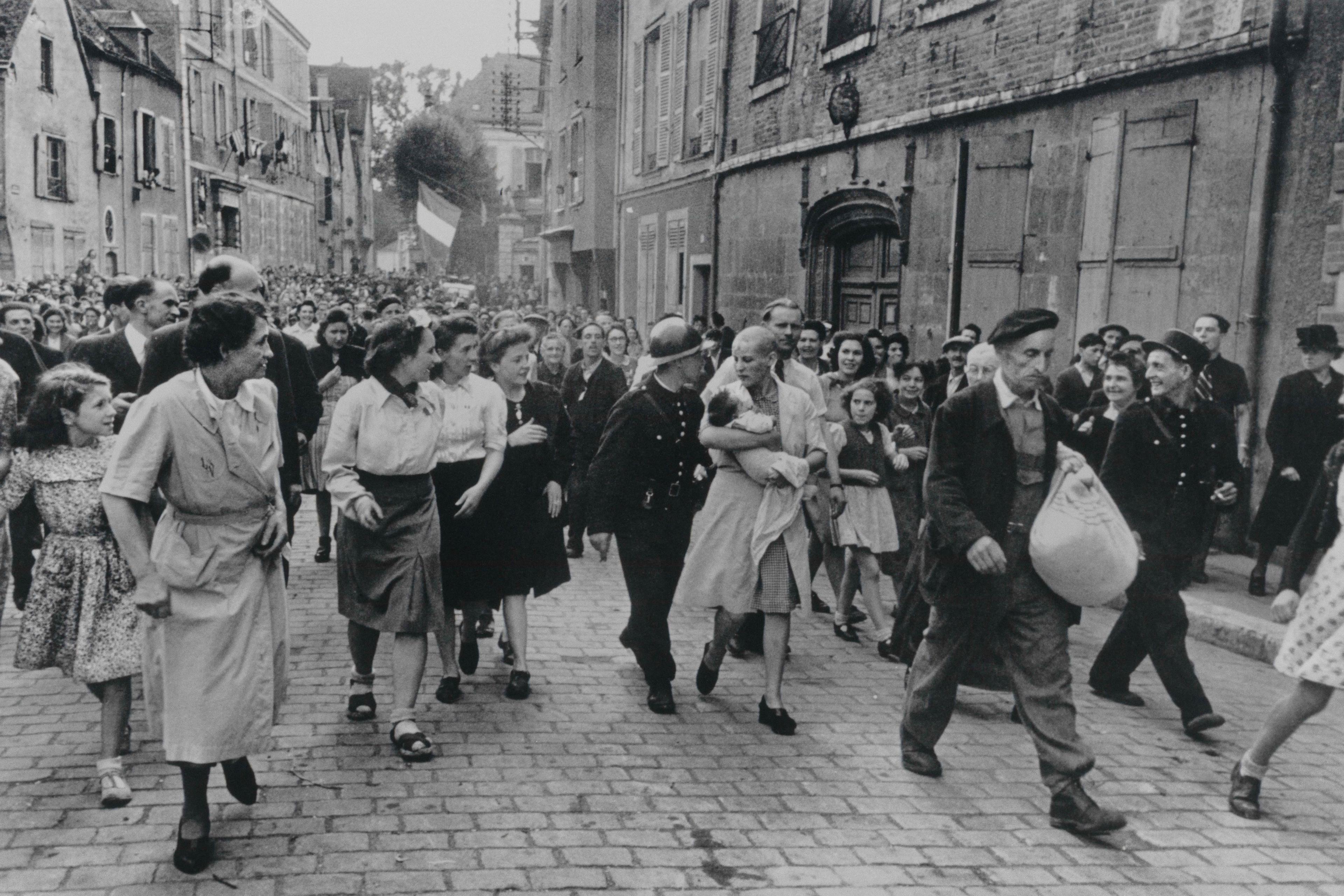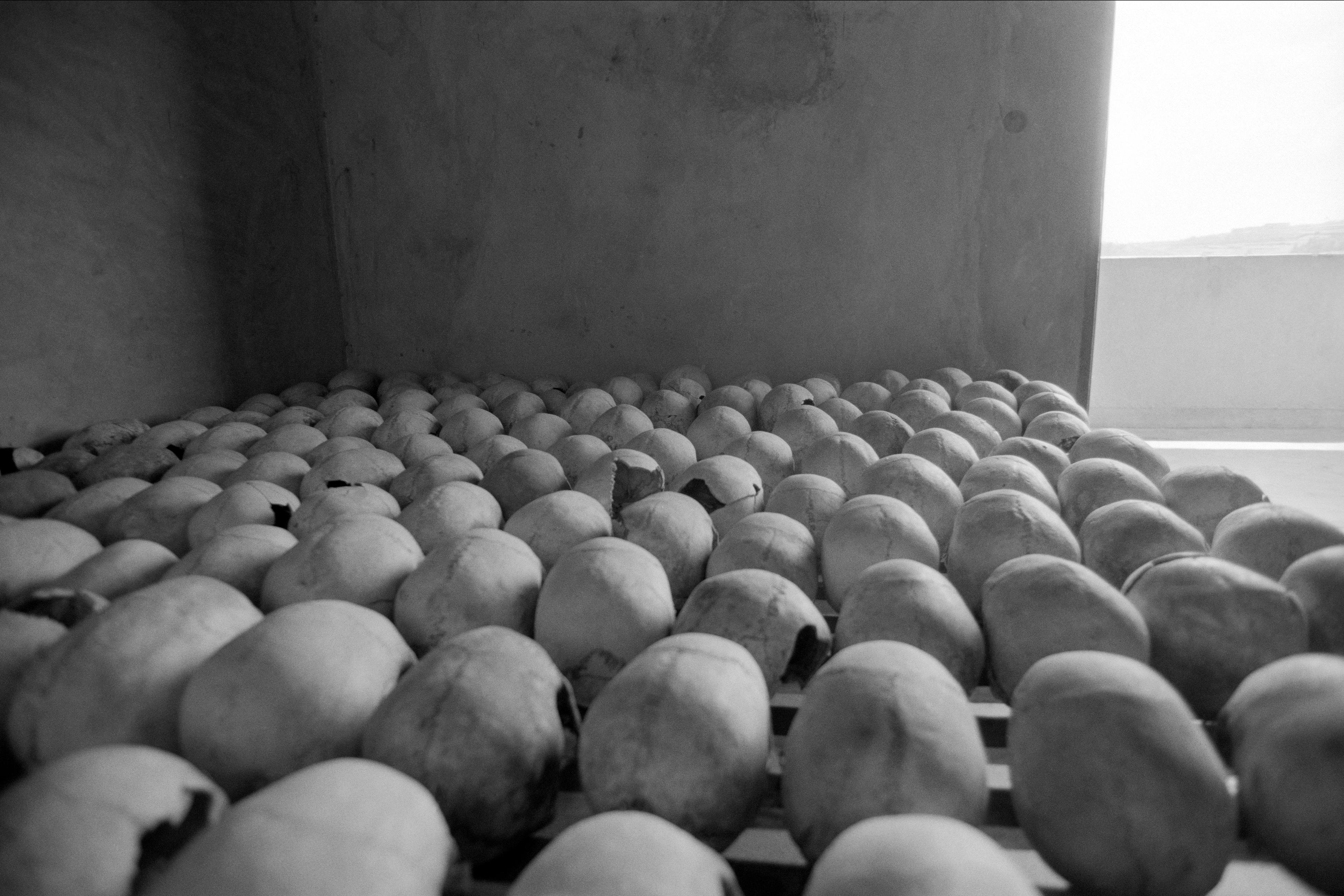Humiliation is more than an individual and subjective feeling. It is an instrument of political power, wielded with intent. In the late 1930s, Soviet show trials used every means to degrade anyone whom Stalin considered a potentially dangerous opponent. National Socialism copied this practice whenever it put ‘enemies of the people’ on trial. On the streets of Vienna in 1938, officials forced Jews to kneel on the pavement and scrub off anti-Nazi graffiti to the laughter of non-Jewish men, women and children. During the Cultural Revolution in China, young activists went out of their way to relentlessly humiliate senior functionaries – a common practice that, to this day, hasn’t been officially reprimanded or rectified.
Liberal democracies, especially after the Second World War, have taken issue with these practices. We like to believe that we have largely eradicated such politics from our societies. Compared with totalitarian regimes of the 20th century, this belief might seem justified. Yet we’re still a far cry from being ‘decent societies’ whose members and institutions, in the philosopher Avishai Margalit’s terms, ‘do not humiliate people’, but respect their dignity. Although construction of the road to decency began as early as around 1800, it was – and remains – paved with obstacles and exceptions.
Mass opposition to the politics of humiliation began from the early 19th century in Europe, as lower-class people increasingly objected to disrespectful treatment. Servants, journeymen and factory workers alike used the language of honour and concepts of personal and social self-worth – previously monopolised by the nobility and upper-middle classes – to demand that they not be verbally and physically insulted by employers and overseers.
This social change was enabled and supported by a new type of honour that followed the invention of ‘citizens’ (rather than subjects) in democratising societies. Citizens who carried political rights and duties were also seen as possessing civic honour. Traditionally, social honour had been stratified according to status and rank, but now civic honour pertained to each and every citizen, and this helped to raise their self-esteem and self-consciousness. Consequently, humiliation, and other demonstrations of the alleged inferiority of others, was no longer considered a legitimate means by which to exert power over one’s fellow citizens.
Historically then, humiliation could be felt – and objected to – only once the notion of equal citizenship and human dignity entered political discourse and practice. As long as society subscribed to the notion that some individuals are fundamentally superior to others, people had a hard time feeling humiliated. They might feel treated unfairly, and rebel. But they wouldn’t perceive such treatment as humiliating, per se. Humiliation can be experienced only when the victims consider themselves on a par with the perpetrator – not in terms of actual power, but in terms of rights and dignity. This explains the surge of libel suits in Europe during the 19th century: they reflected the democratised sense of honour in societies that had granted and institutionalised equal rights after the French Revolution (even in countries that didn’t have a revolution).
The evolution of the legal system in Western nations serves as both a gauge of, and an active participant in, these developments. From the Middle Ages to the early 19th century, public shaming was used widely as a supplementary punishment for men and women sentenced for unlawful acts. Local officials forced convicted criminals to stand on display in the pillory (a frame that trapped their head and arms), beat them in public and, in severe cases, branded them. Such sanctions were meant to instil shame and, ideally, remorse in the culprit. They followed the logic of deterrence as much as the logic of public consent. By making the public complicit in the sanction, for example by doing nothing to prevent people from insulting or throwing disgusting objects at the offender, the authorities sought to confirm and restate the moral order violated by the punished person.
In this early modern period, shaming wasn’t seen as equivalent to the modern notion of humiliation, as spelled out in the subsequent era of emancipation, democratisation and liberalisation. Whereas humiliation would come to be criticised for denying people’s genuine dignity, shaming was seen as a legitimate tool for enforcing social rules and moral standards, especially in the hands of legal authorities. Shame was aimed at trespassers in the hope that it would encourage them to refrain from further wrongdoings and thus merit social reintegration.
However, beginning around 1800, a crucial semantic and political shift took place in Europe. Publicly administered shame sanctions were increasingly criticised by legal scholars and other intellectuals. Among the many arguments against such sanctions, human dignity stood out as the most principled, both in philosophical and political terms. It also proved to be the most effective, finally convincing many European governments to abolish the pillory, public flogging and branding in the 1830s and ’40s. Those practices were now considered ‘humiliating’ because they violated basic civic rights of honour and dignity.
But the fact that courts abandoned public shaming didn’t mean that such practices disappeared altogether. Rituals of shaming had been an integral part of folk culture all over early modern Europe. Men and women who acted, in one way or another, against the unwritten rules of the local society were often subjected to collective forms of admonishment. In England, women who mistreated their husbands were forced to go on so-called skimmington rides in which they (and sometimes their husbands too) sat backwards on a donkey and were paraded around while neighbours and other village people mocked them. Those whose sexual, social or political behaviour was not in sync with popular conventions were often forced to participate in charivaris (a kind of mock parade), accompanied by the clanging of pots and pans and other forms of ‘rough music’ produced by onlookers.
The phenomenon of peers shaming peers has remained a staple during the modern period, even though authorities tried to crack down on practices that threatened their monopoly on the legitimate use of physical force. In the 1820s, in the English city of Bristol, shipbuilders tied blacklegs (people who continued working in defiance of a workers’ strike) to a mast and dragged them around town. In the 1920s, German miners erected shaming posts on which to display the names of strikebreakers.
In the wake of the Second World War, local mobs across Europe targeted women in a particular way. After the war, crowds publicly humiliated tens of thousands of women who had conducted love affairs with German soldiers during the occupation: they shaved their hair and paraded them through the streets as onlookers cheered and clapped their hands. As late as the 1970s, Italian workers used rough music and shaming parades to humiliate their bosses and supervisors for mismanagement. Even in 1971, during the Northern Irish troubles, Catholic women who dated British soldiers ran the risk of being tied to streetlamps, having their hair cut off, and being tarred and feathered.
In peacetime, too, shaming rituals have remained popular through the previous century and into this one. Even though European legal systems have long since refrained from administering shame sanctions, state-controlled institutions such as schools, hospitals, the police and the military have openly and deliberately continued to use such strategies in order to achieve conformity and discourage seemingly dysfunctional attitudes.
Since the 1960s, liberalising trends in Western societies have helped to bring such strategies to light and pressure institutions to abolish them. But it took the British parliament until 1986 to pass a law forbidding corporal punishment in state-run schools; in independently run, so-called ‘public schools’ in the UK, it was permitted until a decade later. Up to this very day, soldiers are subjected to cruel practices of personal debasement at the hands of their superiors and in front of their comrades. Military discipline and esprit de corps prevent victims from complaining and asserting their human right to dignity; usually, only a few cases become known publicly and trigger outrage and indignation.
Even if formal institutions can, in the long run, be compelled to respect their members’ dignity, unfortunately it has been a feature of public life over recent decades that individuals and social groups enjoy a greater freedom to behave ‘indecently’ and inflict harm on each other. People often use this freedom to humiliate ‘horizontally’. Such humiliation is often no longer about shaming someone into a socially acceptable conduct. Instead, it’s about degrading others for what they are: too smart or too dumb, too fat or too skinny, too white or too black, too feminine or too masculine. Religious and ethnic backgrounds as well as sexual orientations have served as popular targets of humiliation.
In recent years, social media has greatly expanded the opportunities for, and the effects of this kind of humiliation. The internet puts no constraints on how widely a humiliating video, image or text can be circulated. It also invites more and more people to actively participate in the humiliation game and thus gain ‘followers’.
Individuals who find themselves on such lists of shame can hardly protect themselves. Collectively, though, vulnerable groups have been fighting back. Since the 1960s, feminists condemned sexist media that reduced women to sex toys, and sharply criticised their ubiquitous discrimination as a violation of human rights and dignity. The gay movement organised against what they experienced as the homophobic politics of humiliation, countering it with claims of pride and self-esteem. Antiracists continue to fight an uphill battle against the prejudice, resentment and hatred that resound in multiple arenas and publics. As a general rule, migrants and refugees find it the most difficult to raise a collective voice against everyday occurrences of abasement. They rely on the assistance and support of human rights activists who step in to remind citizens of their basic duties and responsibilities – above all, the duty to respect human dignity.
Around 1800, this group of ‘activists’ was small but vocal. In 2020, it is far bigger and more eloquent. It operates worldwide. It’s backed by constitutional norms rather than by moral appeals alone. At the same time, humiliation as a social practice performed by those who seek to strengthen and affirm their power over others has not disappeared. It continues to be highly attractive to children, adolescents and adults who feel empowered by pushing others into the gutter. By involving a wide audience, social media helps the perpetrators who seek to humiliate others. Indeed, they thoroughly depend on that audience to ‘Like’ their behaviour and approve of it. Similar to shaming, humiliation needs spectators to accomplish its purpose. Beyond destroying the victim’s sense of self, humiliation is about exposing his or her subjugation to a social world that looks on and cheers the aggressor.
To clamp down on those in society who seek to humiliate others thus entails depriving them of a complicit audience. Educating and incentivising citizens of all ages to refuse to consent to and, if possible, object to acts of deliberate humiliation is essential. Sensitivity to humiliation has clearly increased over the past decades, thanks to a growing commitment to human rights and dignity. But ‘decent societies’ are still a work in progress, and can easily be dismantled if not backed by a popular consensus against humiliation.








